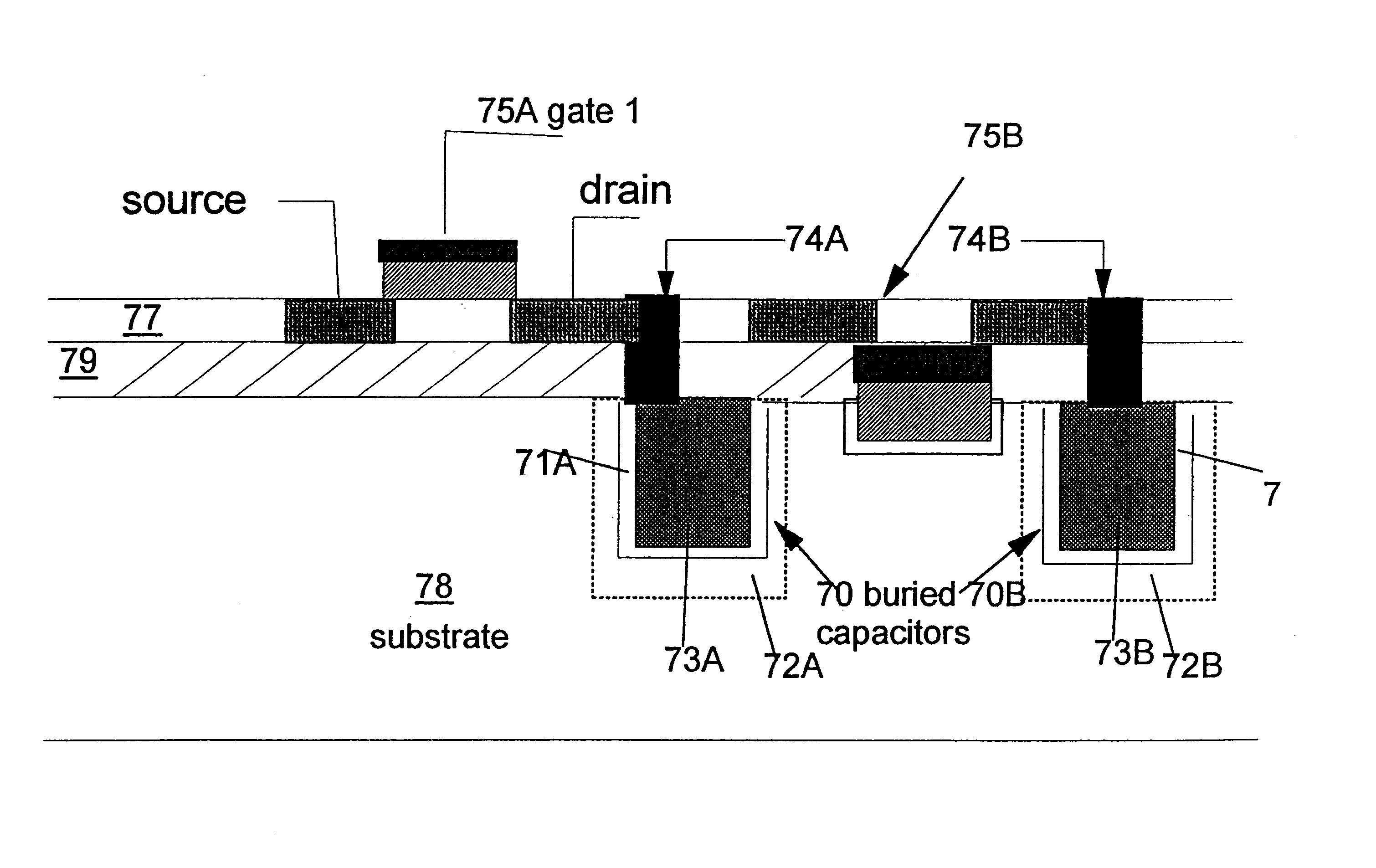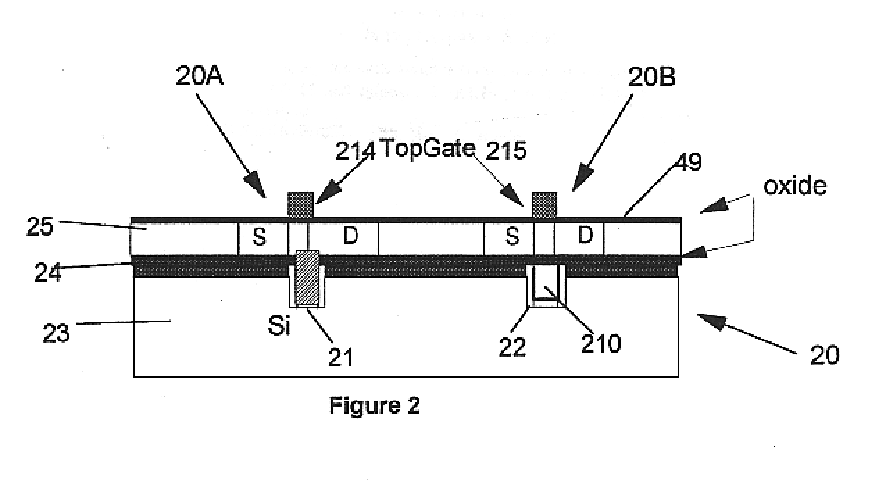Method and structure for buried circuits and devices
a technology of buried circuits and devices, applied in the direction of semiconductor devices, semiconductor/solid-state device details, electrical apparatus, etc., can solve the problems of floating body effects, soi techniques introduce newer problems, and typically at higher manufacturing costs
- Summary
- Abstract
- Description
- Claims
- Application Information
AI Technical Summary
Benefits of technology
Problems solved by technology
Method used
Image
Examples
Embodiment Construction
Going back to FIGS. 11A-11B illustrating the conventional SOI device, wherein oxide layer 111 separates device layer 110 from substrate 112. FET devices 113 are built into device layer 110. One conventional technique forms FET transistors with the following steps: a gate oxide is formed by a surface oxidation of layer 110, a gate electrode is formed by deposition and patterning of polysilicon, and source and drain regions are formed by implantation of a dopant. These source / drain regions, gate electrodes can then be surface wired 114 by common interconnection processes.
Turning now to the invention, FIGS. 1A-1C illustrate respectively a buried gate 13, a buried wire 14, and a buried capacitor 15 which are exemplary structures resulting from the present invention to use the BOX 12 as an integral part of devices and even entire circuits. Either the SIMOX technique or the bonded technique can be used. Substrate 10 receives device components which are then complemented with components 16...
PUM
 Login to View More
Login to View More Abstract
Description
Claims
Application Information
 Login to View More
Login to View More - R&D
- Intellectual Property
- Life Sciences
- Materials
- Tech Scout
- Unparalleled Data Quality
- Higher Quality Content
- 60% Fewer Hallucinations
Browse by: Latest US Patents, China's latest patents, Technical Efficacy Thesaurus, Application Domain, Technology Topic, Popular Technical Reports.
© 2025 PatSnap. All rights reserved.Legal|Privacy policy|Modern Slavery Act Transparency Statement|Sitemap|About US| Contact US: help@patsnap.com



